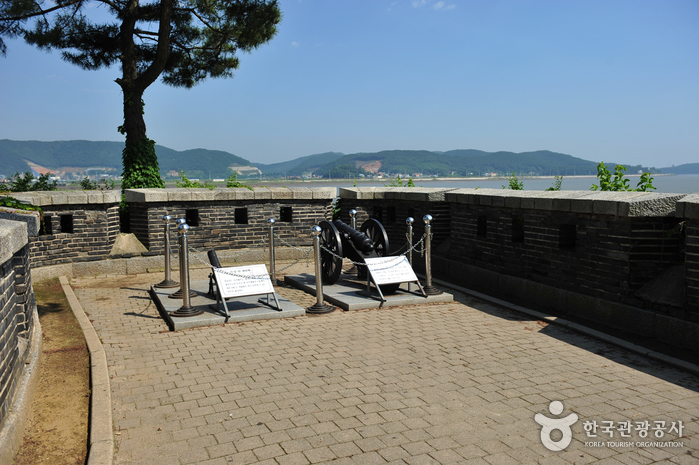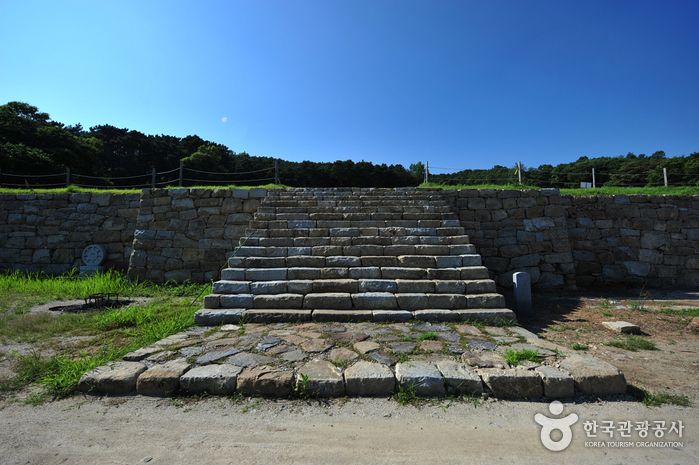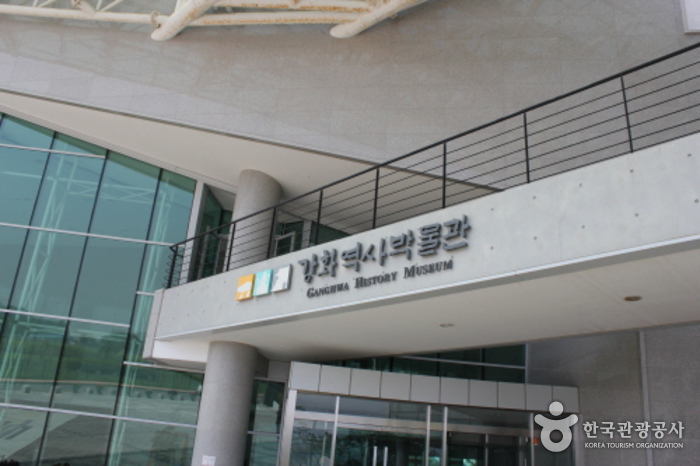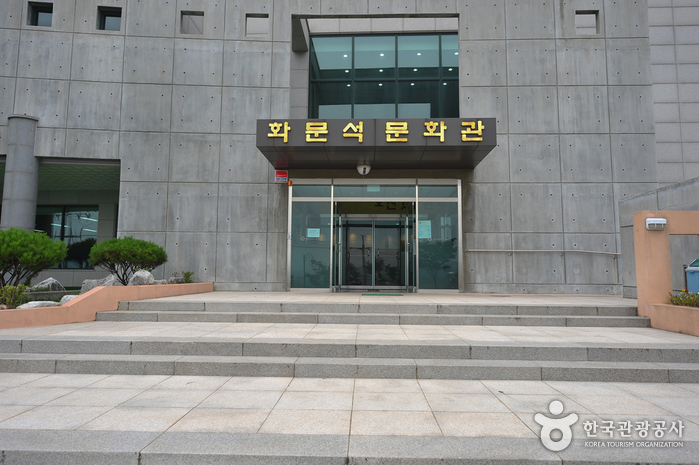[Ganghwa Nadeul-gil Course 2] Homeland Fortification Trail ([강화 나들길 제2코스] 호국돈대길)
3.3 Km 23046 2021-08-11
24, Cheonghadong-gil, Ganghwa-gun, Incheon
+82-32-934-1906
The Ganghwa Nadeul-gil Trails are a collection of walking paths along the coast of Ganghwa Island that connect the watchtowers and and walls of Ganghwasanseong Fortress, as well as royal tombs and other historically significant sites from the Goryeo dynasty that dot the island.
[Ganghwa Nadeul-gil Course 2] Homeland Fortification Trail
Course 2 stretches over a 17 kilometer area between Gapgotdon Watchtower and Chojijin Fort. This trail showcases the history of the island and the changes that happened before and after the opening of the port. The course follows a coastal road that is particularly beautiful in spring and fall.
Gapgotdon Watchtower (갑곶돈대)
3.4 Km 20624 2021-01-18
18, Haeandong-ro 1366beon-gil, Ganghwa-gun, Incheon
+82-32-930-7077
Gapgotdon Watchtower was built to protect the Ganghwa Straits from invasion when the Goryeo Kingdom moved their capital to Ganghwado Island. The fortified area served as a highly strategic location for the Goryeo Kingdom, and had endured multiple invasions by the Mongolian troops between 1232 and 1270.
The watchtower was fortified in the Joseon dynasty by King Sukjong in 1679 and had once fallen during the French campaign against Korea in 1866. In 1977, the site was restored to its original form. The cannons exhibited at the current site were made during the Joseon dynasty to attack outside invaders from sea.
Ganghwa Seonwonsa Temple Site (강화 선원사지)
3.6 Km 12516 2022-09-19
222, Seonwonsaji-ro, Ganghwa-gun, Incheon
+82-32-933-8234
Ganghwa Seonwonsa Temple Site was first discovered in 1976 during a surface examination around Ganghwado Island undertaken by the Ganghwado Island Academic Research Team of Dongguk University. The site was designated as Historic Site No. 259 in 1977. Seonwonsa Temple was built by General Choi Wu in 1245 (the 32nd year of King Gojong’s reign during the Goryeo dynasty), which was right after the transfer of the capital to Ganghwado during resistance against the Mongolian invasion.
The temple was meant to be a spiritual mainstay in fighting against Mongolia. It used to be one of the two largest temples in Korea along with Songgwangsa Temple. However, the temple was completely destroyed during the early Joseon era, leaving only the site itself. The famous wood blocks of Palman Daejanggyeong (the Tripitaka Koreana), currently housed in Haeinsa Temple at Hapcheon, are said to have been originally stored in Seonwonsa Temple. It is believed that the carved wood blocks were taken from Seonwonsa to Heungcheonsa Temple during the Joseon era and again moved to Haeinsa Temple during the reign of Sejo.
Located on a mountain slope, the presumed location of the building site extends 250 meters from south to north and 170 meters from east to west.
Goryeosan Mountain (고려산)
4.6 Km 32423 2020-04-27
Gocheon-ri, Ganghwa-gun, Incheon
+82-32-930-3515
Goryeosan Mountain, once referred to as Oryeonsan, is a mountain rich in folklore. Legend has it that in the year 416 (during the reign of King Jangsu of Goguryeo), a Buddhist monk named Cheonchukguk climbed Goryeosan Mountain and found Oryeonji Pond where the five-colored lotus flowers bloomed. The monk picked the lotus flower petals and blew them into the air. He then built a temple where each of the petals had landed, naming the temples according to their corresponding color: Jeokseoksa Temple, formerly Jeokryeonsa Temple (red lotus), Baengnyeonsa Temple (white lotus), Cheongryeonsa Temple (blue lotus), Hwangryeonsa Temple (yellow lotus), and Heungnyeonsa Temple (black lotus).
Around 130 dolmens are distributed along the foot of Goryeosan Mountain. Sirumisan Mountain, on the northern side of Goryeosan Mountain is said to have been the birthplace of General Yeongaesomun of the Goguryeo Kingdom.
Dolmen in Bugeun-ri [UNESCO World Heritage] (강화 고인돌 유적 [유네스코 세계문화유산])
4.9 Km 33679 2023-11-10
Bugeun-ri, Ganghwa-gun, Incheon
+82-32-933-3624
Dolmen in Bugeun-ri is a dolmen site in Ganghwa that was designated as a Historic Site for its historical value representing the funeral customs of the Bronze Age. The main stone used to create the tomb is 710 centimeters long, 550 centimeters wide, and 260 centimeters high. The dolmen is an example of the northern dolmen customs, serving as a subject of further research in the field of ancient history. The Dolmen in Bugeun-ri is also registered as a UNESCO World Heritage along with other significant dolmen sites.
Ganghwa History Museum (강화역사박물관)
5.1 Km 45778 2021-08-13
994-19, Ganghwa-daero, Ganghwa-gun, Incheon
+82-32-934-7887
Ganghwa History Museum opened in 2010 with aims to exhibit, preserve and educate visitors about the history and culture of Ganghwa from prehistoric ages to modern times based on artifacts from the area.
Gimpo Munsusanseong Fortress (김포 문수산성)
5.5 Km 8216 2022-12-20
Ponae-ri, Gimpo-si, Gyeonggi-do
+82-31-980-2485
Munsusanseong Fortress was built on Munsusan Mountain in 1694, during the 20th year of the reign of King Sukjong, the 19th king of the Joseon dynasty. The fortress as designed to defend Gwanghwado Island from marine invasion. At the time, the fortress had north, west, and south gates, but they were destroyed in a fire during the Byeong-in Yangyo (1866). The north gate was restoryed in 1995 and the south gate in 2002. The fortress walls span 6 kilometers in length, 4 kilometers of which remain unrestored. Surrounded by beautiful scenery, the top of the fortress commands a spectacular view spanning from North Korea to the Hangang River inlet, and from Samgaksan Mountain to the sea off Incheon in the distance. It is often referred to as the Geumgangsan Mountain of Gimpo as it boasts superb scenery throughout all four seasons. The mountain is home to Munsusa Temple, established during the reign of Silla King Jinseong.
Hwamunseok Cultural Center (강화화문석문화관)
5.7 Km 22512 2021-11-11
413, Jangjeongyango-gil, Ganghwa-gun, Incheon
+82-32-930-7060
Ganghwa Hwamunseok, Korea's only rush-weaving handicraft, is a cultural legacy inherited from the Goryeo period, and is a product that is exclusively produced in Ganghwa-gun. To preserve and develop its historic rush-weaving handicrafts, Ganghwa-gun constructed Hwamunseok Cultural Center at Yango-ri in Songhae-myeon, the craft's place of origin. Visitors to the cultural center will be able to view the individual features and transformations of Hwamunseok in addition to the past, present and future of rush-weaving handicrafts.
Jeokseoksa Temple (적석사)
6.8 Km 14300 2021-08-02
181, Yeonchon-gil, Ganghwa-gun, Incheon
+82-32-932-6191
Jeokseoksa Temple is a traditional Buddhist temple that was founded around 1,600 years ago. It is known for "Gamnojeong," which is the water trickling out from the rock crevices on the east side of Daeungjeon Hall (main temple building). While the water is cool and sweet, legend has it that it dries up or turns murky in times of national crisis. According to the records, Palman Daejanggyeong (Tripitaka Koreana printing woodblocks) used to be kept in Jeokseoksa before they were moved to Baengnyeongsa Temple, then to Jeondeungsa Temple, and finally to Haeinsa Temple.
Jeokseoksa Temple is connected to Nakjodae Observatory, which offers a magnificent view of the sun setting over the West Sea. In fact, the view is so magnificent that it is admired as one of the 10 best sceneries of Ganghwado Island.
Gimpo International Sculpture Park (김포국제조각공원)
6.9 Km 19934 2022-12-20
38, Yonggang-ro 13beon-gil, Gimpo-si, Gyeonggi-do
+82-31-984-5167
Gimpo Sculpture Park is situated in a large forest and is decorated with 30 sculptures: 14 by international artists and 16 by Korean artists. Since the site is located near the DMZ, the only divided country in the world, each sculpture expresses the overarching theme of unification. A favorite spot for weekend picnicking families and couples on dates, the park is expected to be included in a large tourist complex in the near future along with nearby Reports Park and the youth training center.
![[Ganghwa Nadeul-gil Course 2] Homeland Fortification Trail ([강화 나들길 제2코스] 호국돈대길)](http://tong.visitkorea.or.kr/cms/resource/05/1895205_image2_1.jpg)



![Dolmen in Bugeun-ri [UNESCO World Heritage] (강화 고인돌 유적 [유네스코 세계문화유산])](http://tong.visitkorea.or.kr/cms/resource/77/1876577_image2_1.jpg)



 English
English
 한국어
한국어 日本語
日本語 中文(简体)
中文(简体) Deutsch
Deutsch Français
Français Español
Español Русский
Русский